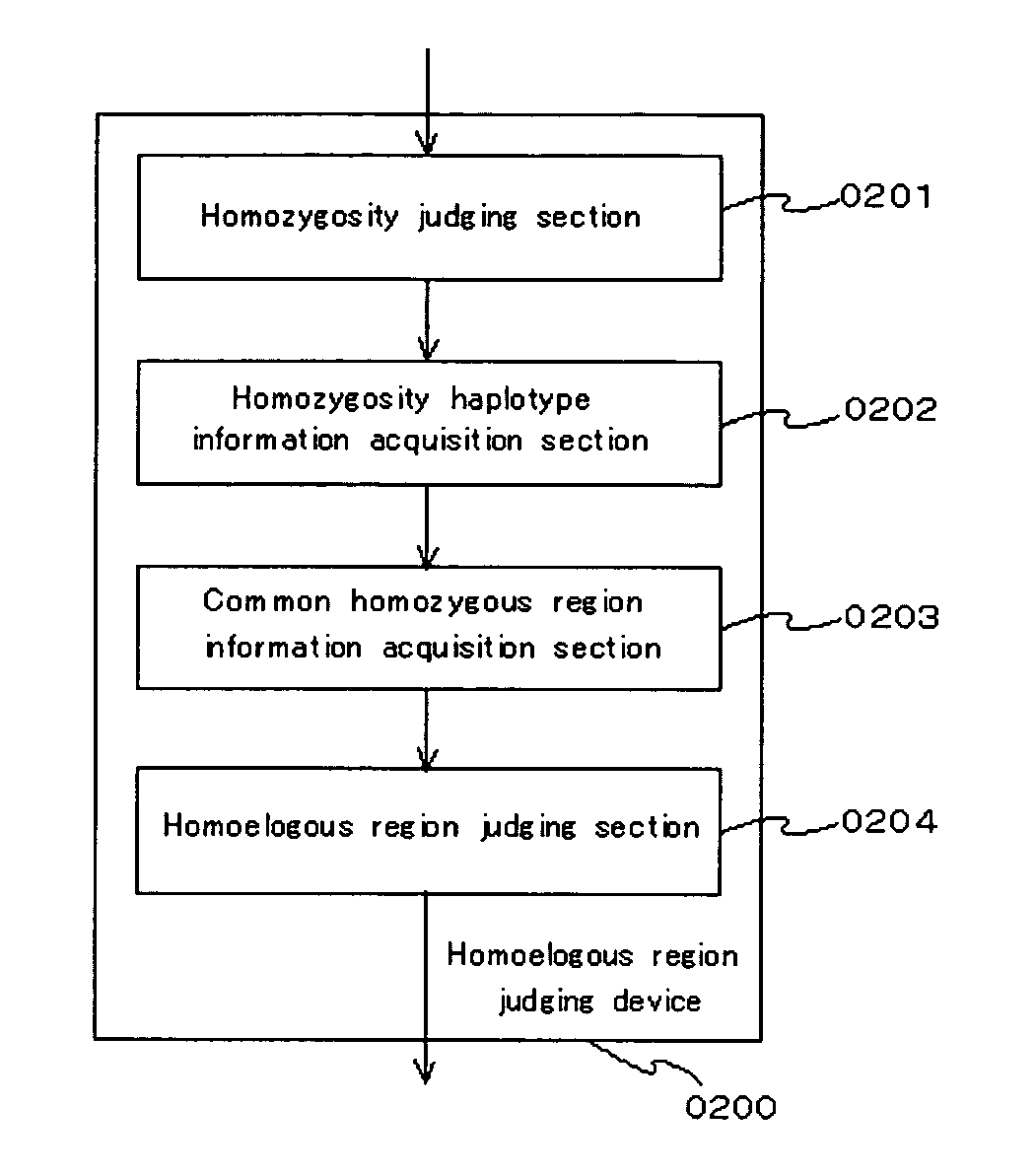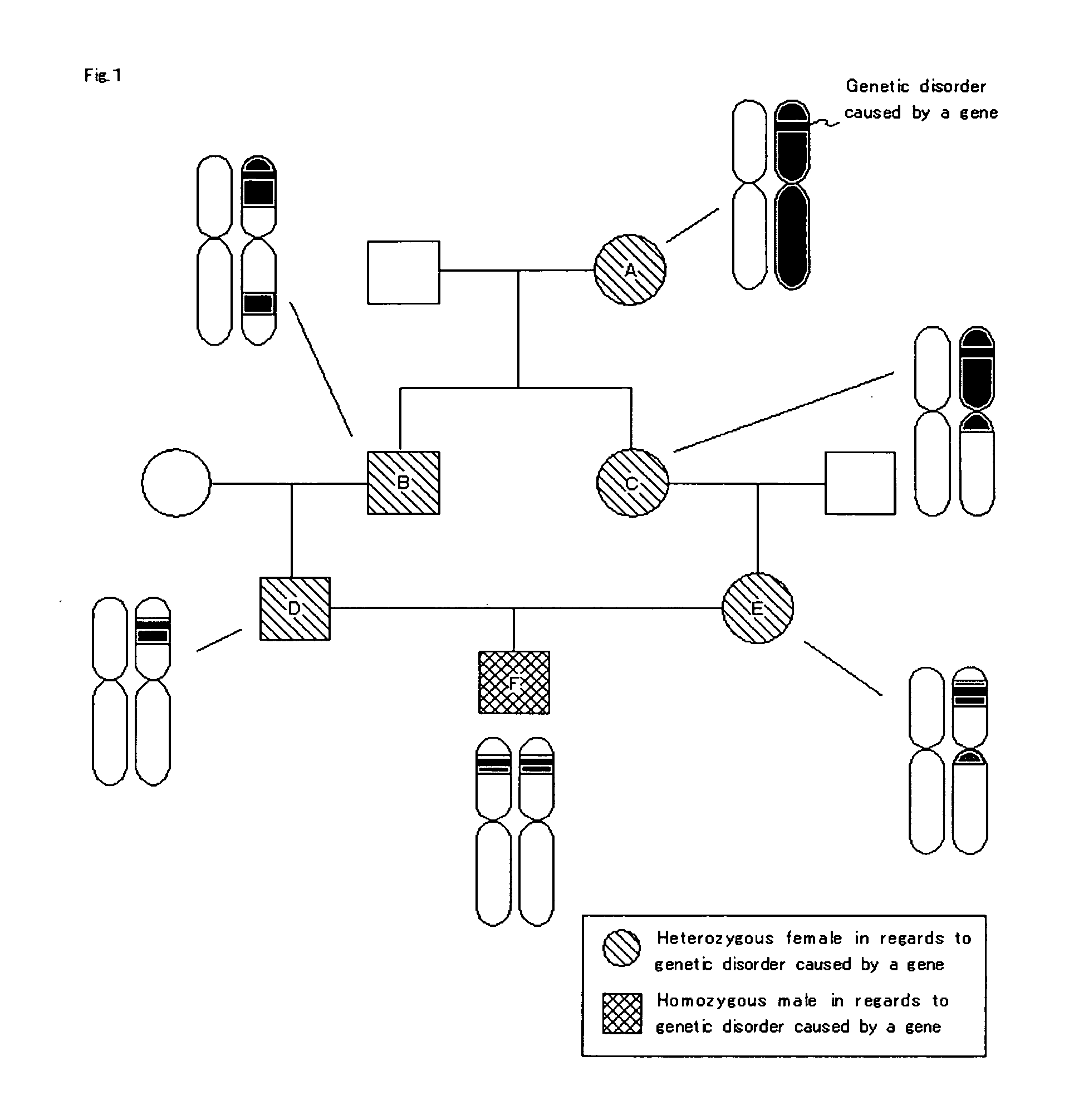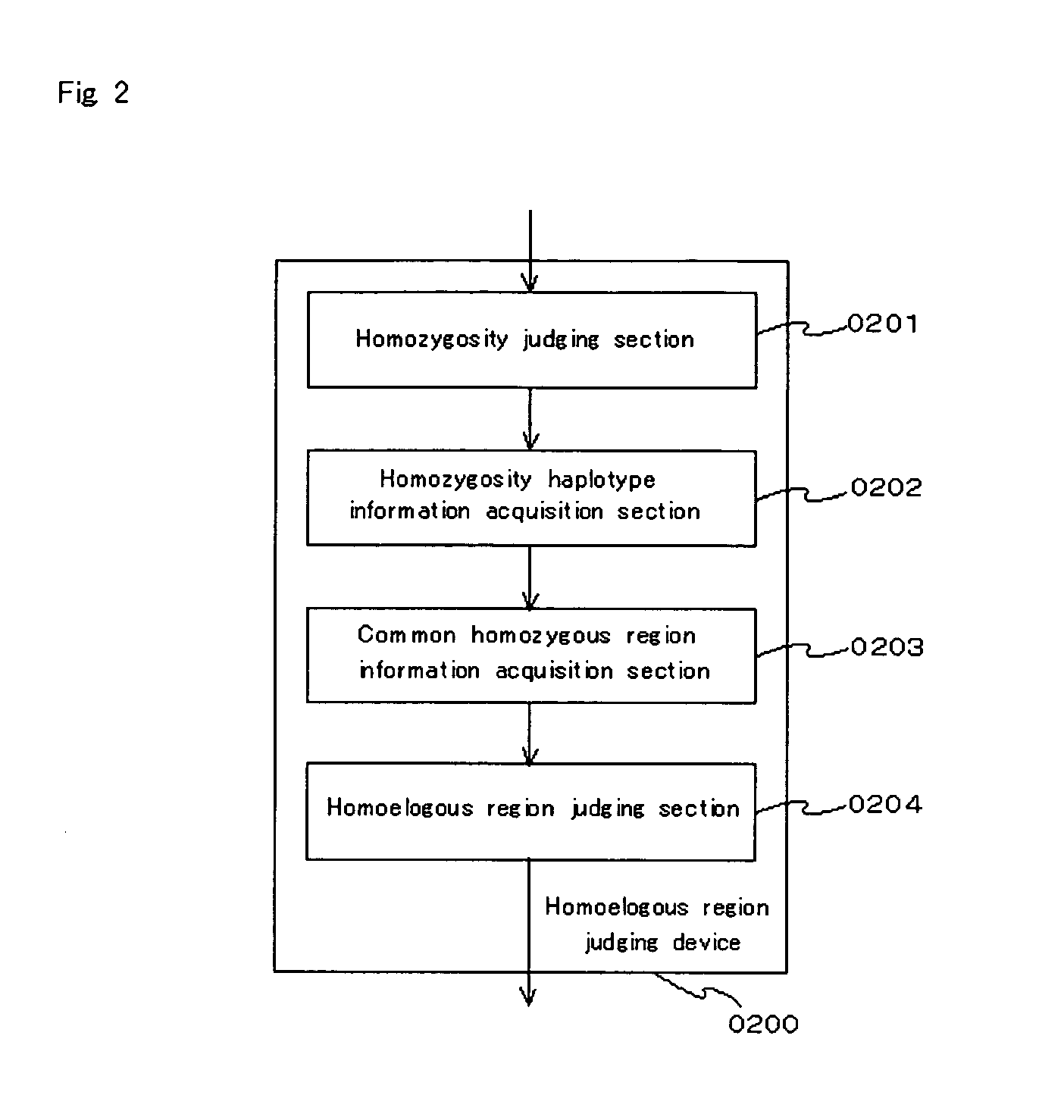Homozygote haplotype method
a homozygote and haplotype technology, applied in the field of homozygote haplotype method, can solve the problems of large number of samples, large number of analyses, and the need for a control group and reexamination, so as to improve the accuracy of identification of a disease susceptibility gene and reduce the number of analyses carried out.
- Summary
- Abstract
- Description
- Claims
- Application Information
AI Technical Summary
Benefits of technology
Problems solved by technology
Method used
Image
Examples
first embodiment
Structure of a First Embodiment
[0076]An example of a functional block of the embodiment is shown in FIG. 1.” A homoeologous region judging device of the embodiment (0200) comprises a homozygosity judging section (0201), a homozygosity haplotype information acquisition section (0202), a common homozygous region information acquisition section (0203) and a homoeologous region judging section (0204).
[0077]The homozygosity judging section (0201) is configured so as to judge whether or not bases comprising polymorphic markers in sample DNA indicating a state of diploidy or polyploid indicate homozygosity. As a polymorphism typing method, the PCR-SSCP, PCR-RFLP, direct sequencing method, MALDI-TOF / MS method, TaqMan method, invader method, and the like can be used. The homozygosity judging section judges whether bases for which typing have been conducted via the aforementioned methods indicate homozygosity or not.
[0078]“Sample DNA” is genome DNA that serves as a sample used for identifying...
second embodiment
Outline of the Second Embodiment
[0099]The homoeologous region judging device and method of the embodiment comprises a polymorphic marker selection section that judges a homoeologous region using of the selected polymorphic markers.
Configuration of the Second Embodiment
[0100]An example of a functional diagram of the embodiment is shown in FIG. 7. A homoeologous region judging device (0700) of the embodiment comprises a polymorphic marker selection section (0701), a homozygosity judging section (0702), a homozygosity haplotype information acquisition section (0703), a common homozygous region information acquisition section (0704) and a homoeologous region judging section (0705).
[0101]The polymorphic marker selection section (0701) is configured so that polymorphic markers as the subject of judgment regarding homozygosity are selected from among polymorphic markers. “Polymorphic markers as the subject of judgment regarding homozygosity” refers to the polymorphic markers related to exe...
third embodiment
Outline of the Third Embodiment
[0107]The homoeologous region judging device and method of the embodiment are characterized by acquisition of the overlapping frequency of a homoeologous region, and they can judge the high or low possibility of a region being homoeologous in regards to a group of samples as the subjects of measurement.
Configuration of the Third Embodiment
[0108]An example of a functional diagram of the embodiment based on the first embodiment is provided in FIG. 9. The homoeologous region judging device (0900) of the embodiment comprises a homozygosity judging section (0901), a homozygosity haplotype information acquisition section (0902), a common homozygous region information acquisition section (0903), a homoeologous region judging section (0904), a homoeologous region overlapping frequency information acquisition section (0905), and a combination determination section (0906).
[0109]The combination determination section (0906) is configured so as to determine the com...
PUM
 Login to View More
Login to View More Abstract
Description
Claims
Application Information
 Login to View More
Login to View More - R&D
- Intellectual Property
- Life Sciences
- Materials
- Tech Scout
- Unparalleled Data Quality
- Higher Quality Content
- 60% Fewer Hallucinations
Browse by: Latest US Patents, China's latest patents, Technical Efficacy Thesaurus, Application Domain, Technology Topic, Popular Technical Reports.
© 2025 PatSnap. All rights reserved.Legal|Privacy policy|Modern Slavery Act Transparency Statement|Sitemap|About US| Contact US: help@patsnap.com



